Gears are mechanisms to transfer motion from one shaft to another. Different types of gears have different applications. For Example, spur gears application is to motion transfer between parallel shafts, whereas Rack and Pinion gears convert rotational motion into linear motion. This article covers various types of gears and their applications. We suggest you read this article on Gear Terminology and Gear Ratio Calculations.
Types of Gears
We can classify gears into the following types according to the type of motion a gear transfers from one shaft to another.
- Spur Gear
- Helical Gears
- Herringbone and Double Helical Gears.
- Rack and Pinion
- Bevel Gear
- Worm and Worm Wheel.
- Spiral Gear
- Hypoid Gear
- Internal Gears
Spur Gear
Spur Gears are a type of simple gears that have teeth parallel to the gear axis. They are used to transmit power between parallel shafts.
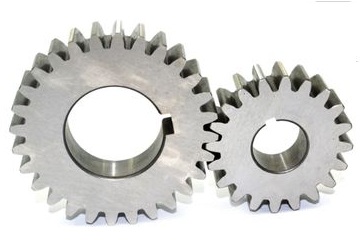
Applications of Spur Gears
Spur gears are mostly used to reduce speed and increase torque for low-speed applications. But in some consumer products, they are also used in high-speed applications. Here are the applications of spur gears in various products.
- Mixer and blender
- Washing machines
- Automobiles
- Bicycle
- Machines
- Mechanical clocks etc.
Advantages of Spur Gears
- Simple in construction.
- Easy to manufacture.
- Low cost and high efficiency.
- Various gear ratios can be achieved.
Disadvantages of Spur Gears
- Noisy.
Helical Gears
Helical gears have teeth inclined to the gear axis. For the same width, helical gears have longer teeth compared to spur gears. Therefore they can transfer more power between parallel shafts compared to spur gears.
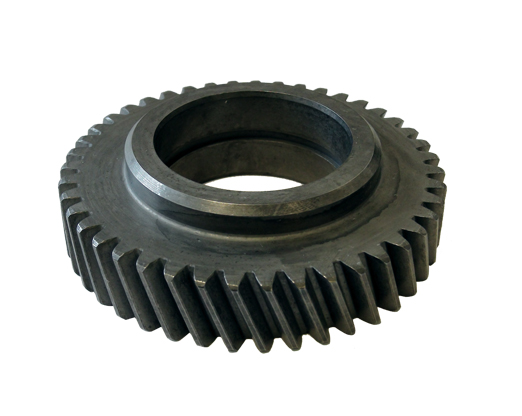
Applications of Helical Gears
Helical gears are used to transfer heavy loads at very high speed between parallel shafts. Here are the Applications of helical gears in various products.
- Automotive gearboxes.
- Printing and other machinery
- Conveyors and elevators
- Factory automation etc.
Advantages of Helical Gears
- Higher load-carrying capacity and contact ratio compared to spur gears.
- Smoother and quieter than spur gears.
- Good precision rating.
Disadvantages of Helical Gears
- Lower efficiency compared to spur gears.
- Helix angle also increases axial thrust on the shaft.
Herringbone and Double Helical Gear
Double Helical gear has opposite helical teeth with a groove in between the teeth. Whereas Herringbone gear does not have a groove. Both gear types are used to transfer power between parallel shafts.
Compared to helical gear, Herringbone and double helical gears have the advantage of balancing axial thrust in both directions. Therefore they are used for high load carrying capacity requirements such as differentials and heavy machinery.
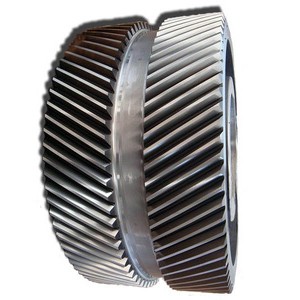
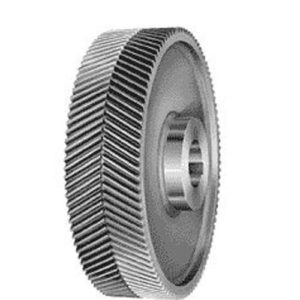
Advantages of Herringbone Gear
- Reduced axial force
- Smoother transmission and engagement
- Reduced noise
- Self centering capability
- High load capacity
Disadvantages of Herringbone Gear
- Difficult to manufacture
- High Cost.
Rack and Pinion
A rack is a bar-shaped cylindrical gear with an infinite radius, whereas a pinion is a type of spur gear. They are used to convert rotational motion into linear motion.
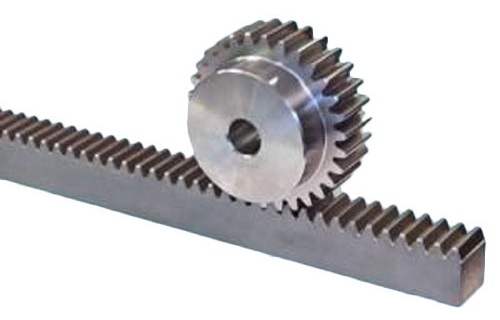
Since the rack gear with infinite length is not possible in the real world. Therefore rack and pinion gears are not used to transfer continuous motion. They are used to transfer transnational motion.
Application of Rack and Pinion Gear
- Convert car steering wheel rotation into side motion of wheels.
- Lifting Mechanisms
- Shaper machine.
Bevel Gear
Bevel gears have a cone surface and its teeth are cut along that cone surface. These types of gears are used to transfer motion in perpendicular direction at higher velocity ratios.
Following are the applications of bevel gears in various products.
- Machine Tools: Lathe and milling machine.
- Garden Equipment.
- Positioning Equipment
- Automotive differentials and right-angle drives etc.
According to their construction, bevel gears can be classified into three types.
1) Straight Bevel Gear
Straight bevel gears are used to transfer power between perpendicular shafts.
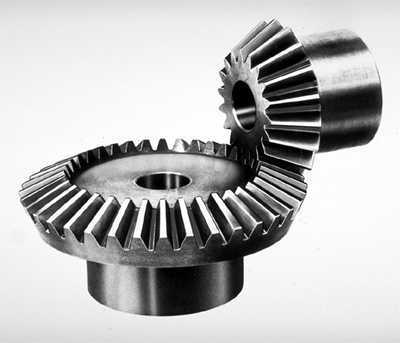
Advantages of Straight Bevel Gears
- Operate under high speeds and high loads.
- Good precision rating.
Disadvantages of Straight Bevel Gears
- Difficult to manufacture
2) Spiral Bevel Gear
Spiral bevel gears transfer power between perpendicular shafts. They have applications similar to straight bevel gears.
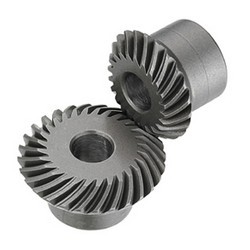
Advantages of Spiral Bevel Gears
- Higher load carrying capacity compared to straight bevel gear.
- Smooth Operation.
Disadvantages of Spiral Bevel Gears
- Lower efficiency compared to straight bevel gear.
Worm and Worm Wheel
The Worm and worm wheel has a sliding contact of a worm (similar to a screw) and a worm gear (Helical gear). They are used in right-angle skew shafts. To reduce friction worm is manufactured in hard material whereas the worm wheel is manufactured in soft material.
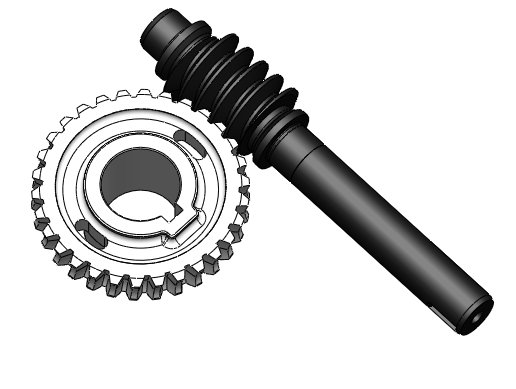
Applications of worm and Worm Wheel
Worm and Worm wheel gear has application in devices both at home and in heavy machinery. Some of its applications include:
- Elevators and Lifts
- Tuning instruments such as guitar.
- Of-road vehicles.
Advantages worm and Worm Wheel
- Gear engagement occurs without any shock.
- Compact drives
- Quieter operation
- High reduction ratios (8 to 400)
Disadvantages of Worm and Worm Wheel
- Considerable amount of heat is produced due to friction.
- Low efficiency from 40% to 90 %
- Higher speed ratio gears are non-reversible.
- Lubrication is required for heat dissipation and for improving efficiency.
Spiral Gear
Spiral Gears are also known as crossed helical gears with high helix angle. They are used to transmit power between two non-intersecting non-parallel shafts at relatively low load and low speed. Some spiral gear applications include instruments, sewing machines, etc.
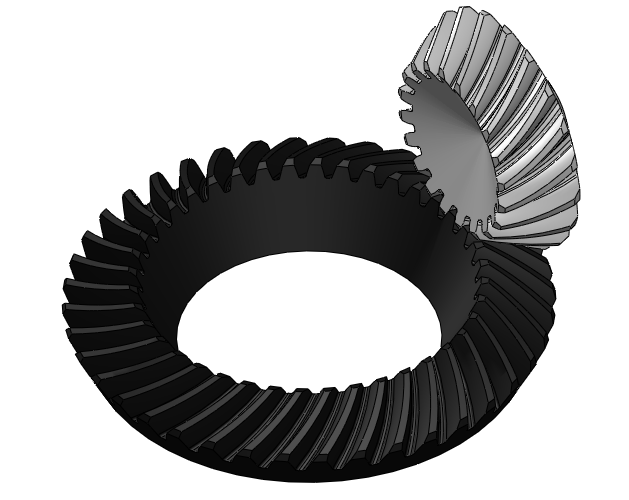
Disadvantages of Spiral Gear
- Poor precision rating
Hypoid Gear
A Hypoid Gear is a type of spiral bevel gear whose axis does not intersect with the axis of the meshing gear. The shape of a hypoid gear is a revolved hyperboloid. In other words, the pitch surface of the hypoid gear is a hyperbolic surface.
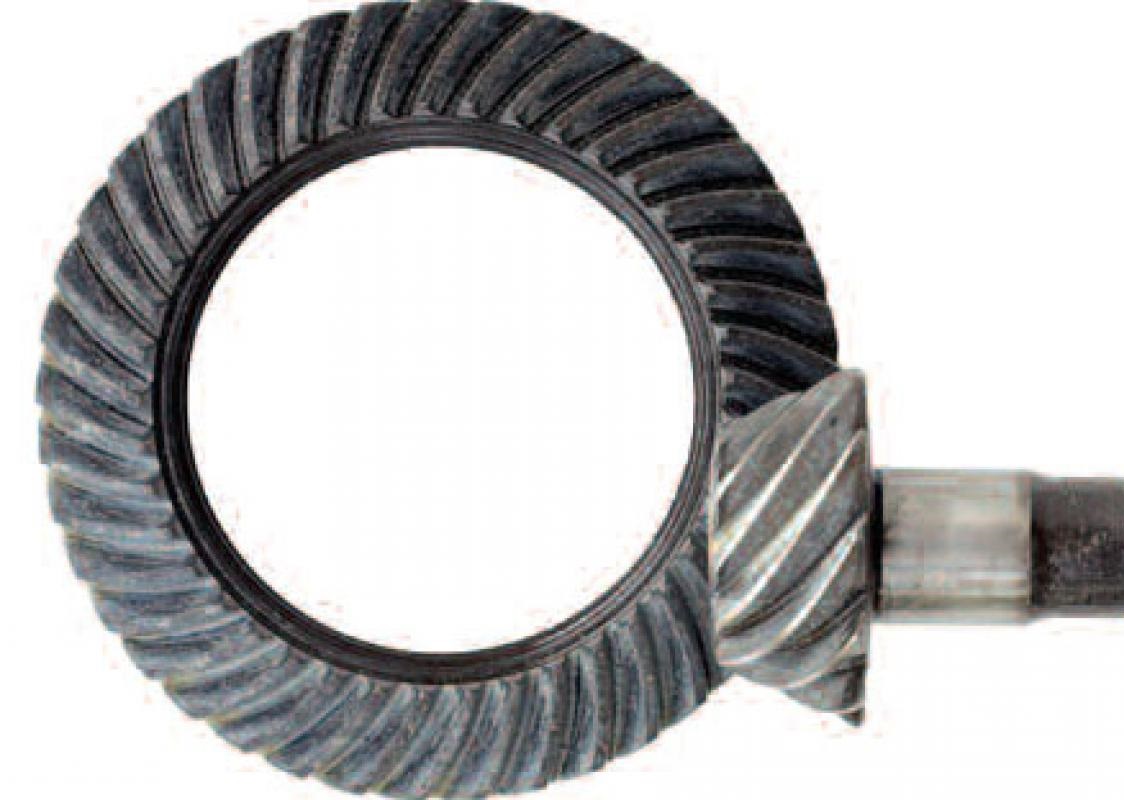
Hypoid gears are typically used in rear-drive automobile drive trains. But now Hypoid gears are replaced by spiral gears. But these gears are still common in large vehicles because they can transfer large torque.
Internal Gears
Internal Gears transmits power between parallel shafts. In this, the larger gear has teeth on the inner periphery and both driver and driven gear run in the same direction. Internal gears have applications involving planetary gear drives (Planetary, solar, and star) and gear couplings.
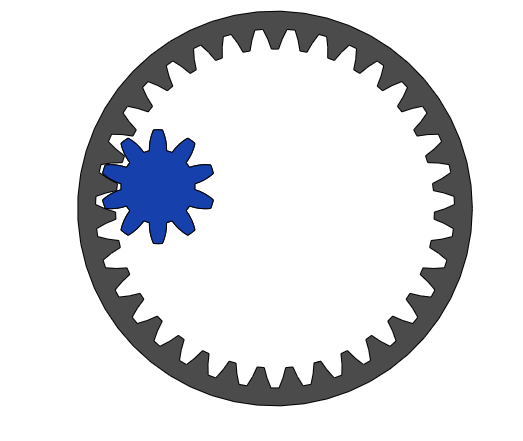
Advantages of Internal Gears
- Very Compact in size
Disadvantages of Internal Gears
- Not recommended for precision meshes because of design, fabrication, and inspection limitations.
To sum up, various types of gears are used to transfer motion from one shaft to another. Each gear type has its advantages, limitations, and applications. For Example, spur gears are used to transfer motion between parallel shafts. Whereas Rack and Pinion gear arrangement are used to convert rotational motion into linear motion. Click this link!! to know in detail about Reduction Gear drives.
We will keep updating more information on various types of gears. Please add your comments questions or suggestions on various types of gears their advantages, limitations, and applications.

How to calculate gear ratio and module how to callculate no of teetg in gear